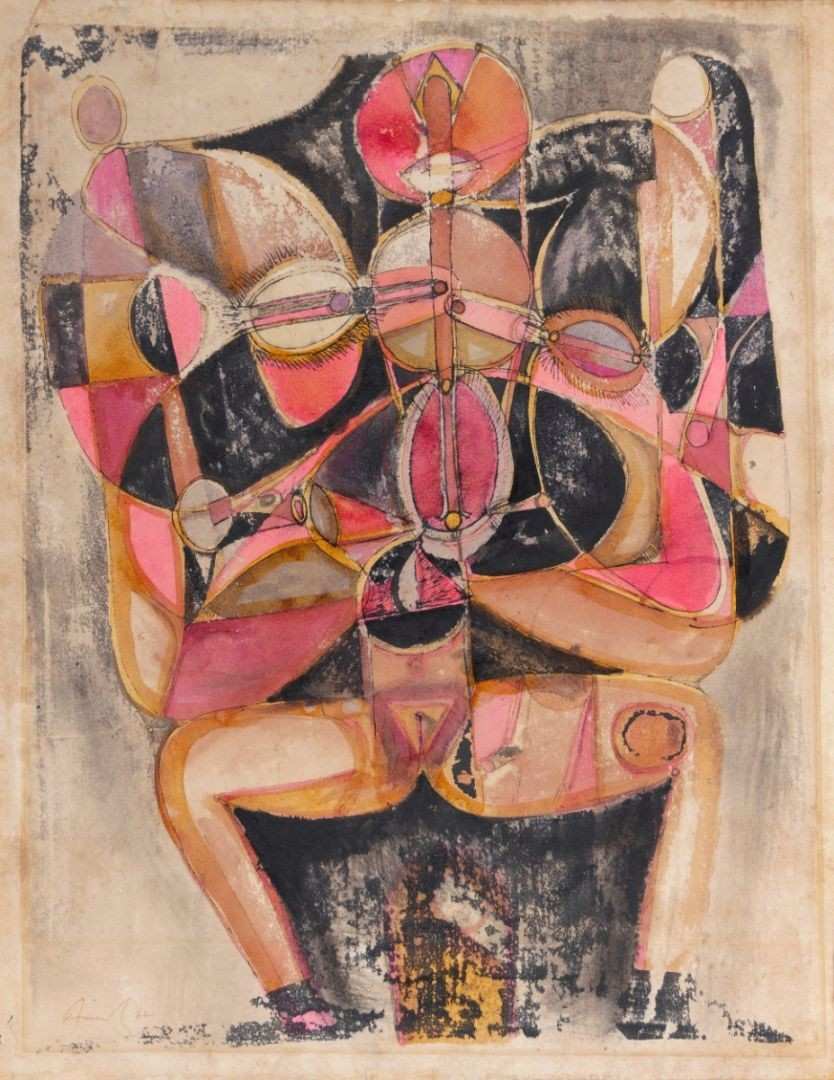◖Avinash Chandra: The Erotic and the Symbolic in Art◗

Avinash Chandra (1931–1991) was a pioneering Indian-born British artist whose work delved deeply into themes of sexuality and desire, employing a symbolic and abstract visual language. His art stands as a testament to the exploration of human sensuality, merging traditional Indian motifs with contemporary artistic expressions (Fig.1).
Early Life and Artistic Evolution

Born in Shimla, India, Chandra pursued his artistic education at Delhi Polytechnic. Initially, his work focused on landscapes, capturing the essence of his surroundings with a unique perspective. However, upon relocating to London in 1956, his artistic trajectory experienced a significant transformation. Immersed in the vibrant and permissive art scene of London during the 1960s, Chandra began to infuse his work with themes of sexuality and eroticism, drawing inspiration from both his Indian heritage and the liberal Western milieu (Fig.2).
Symbolism and Sexuality in Art

Chandra's oeuvre is characterized by a recurring focus on the female form. His early pieces featured elegant line drawings, which, over time, evolved into more implicit and erotically charged colored compositions. While sexual imagery played a vital role in his art, it was introduced as part of a much larger experience in a wider context (Fig.3). Employing the primitivist trope, Chandra often reduced female anatomy to shapes as though suspended in a space invaded by phallocentric forms.

In London, Chandra developed his own transgressive visual language, drawing inspiration from the sexual symbolisms of Indian Tantric ethos, ideas from European modernism, and the free love culture of the swinging Sixties. His works from this period erupt in an unrestrained fantasy of color, their groovy visuals evoking the hallucinatory effects of psychedelic art (Fig.4). Chandra’s nude figures reminded one of the friezes and sculptures of Khajuraho, while his cityscapes were marked by recurring arches and circles.
Legacy and Recognition

Despite his significant contributions, Chandra's work did not receive the widespread recognition it deserved during his lifetime. Factors such as his relocation to the UK and his distinct thematic focus may have contributed to his relative obscurity in mainstream Indian art narratives. However, recent exhibitions and retrospectives have sought to reintroduce his groundbreaking work to contemporary audiences, highlighting his unique approach to exploring sexuality through art (Fig.5). Avinash Chandra's art remains a compelling exploration of human desire, seamlessly blending cultural influences to create a visual language that is both provocative and profound.
Text by Museum of Eroticism
Image Courtesy: Delhi Art Gallery (DAG).
References:
1. DAG World – “Avinash Chandra” – https://dagworld.com/avinashchandra.html
2. New Indian Express – “Abstraction of a Lost Master Rediscovered” (2024) – https://www.newindianexpress.com/magazine/2024/Dec/14/abstraction-of-a-lost-master-rediscovered
3. Tate Gallery Archives – Exhibitions featuring Avinash Chandra – https://www.tate.org.uk